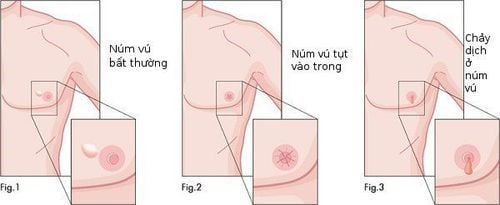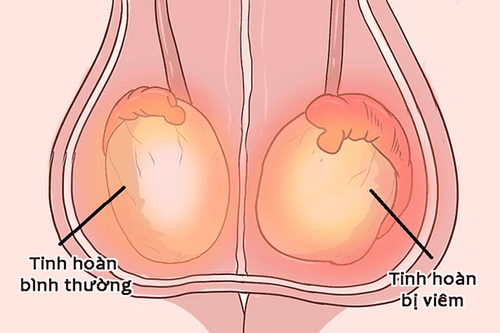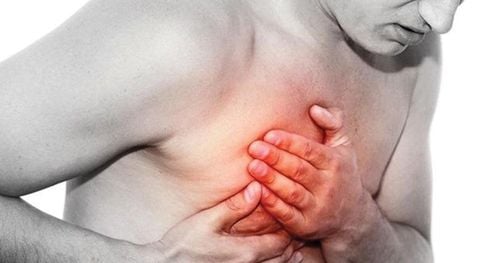This is an automatically translated article.
The article was professionally consulted by doctors of Internal Oncology, Radiation Oncology Center, Vinmec Times City International Hospital.Breast cancer occurs not only in women but also in men. However, due to subjectivity, many people only detect breast cancer when the disease is already advanced. Raising awareness about male breast cancer is a way for men to protect their health.
1. Male breast cancer rate
In the United States and United Kingdom, male breast cancer accounts for between 0.5 and 1% of all breast cancers diagnosed each year. In contrast, in Tanzania and parts of Central Africa, male breast cancer accounts for up to 6% of all breast cancers. The higher rates of male breast cancer in central and eastern Africa may be related to viral hepatitis leading to hyperhidrosis. In our country, there are currently no statistics on this disease.As with women, the incidence of breast cancer in men increases with age, and age at the time of diagnosis tends to be about 5 to 10 years higher than that of women. The annual incidence of breast cancer in men appears to be increasing; A recent report found that the incidence of the disease has increased by 26% over the past 25 years.
Although there are a number of factors that are known to increase the risk of male breast cancer, most men with breast cancer have no known risk factors.
2. Male breast cancer risk factors
2.1. Genetic factors
As with breast cancer in women, a family history of breast cancer in a close relative (father, mother, sibling) is associated with an increased risk of breast cancer in men. This represents about 15 to 20 percent of men with breast cancer who have a family history of the disease, compared with only 7% of the general population.
Dấu hiệu ung thư vú ở nam giới
The risk of breast cancer in men seems to be higher with a BRCA2 mutation than with a BRCA1 mutation. Men who inherit the BRCA2 gene mutation have an estimated 6% lifetime risk of developing breast cancer; this represents a risk 100 times higher than in the general male population.
2.2. Family history
Rates of BRCA mutations vary by race and family history. Among men with breast cancer, up to 14% have a BRCA2 mutation; BRCA1 mutations are rare, except in individuals of Ashkenazi Jewish ethnicity. One study found that 4.5% of Ashkenazi Jewish men with breast cancer had a BRCA1 mutation. Therefore, all men diagnosed with breast cancer should receive genetic counseling and BRCA testing.2.3. Other factors
In addition to the BRCA gene, several other genes are also associated with male breast cancer: mutations in the tumor suppressor gene PTEN (Cowden's syndrome), TP53 (Li-Fraumeni syndrome), PALB2 and repair genes (Cowden syndrome). Lynch syndrome) are both associated with an increased risk of breast cancer in men.Altered estrogen to androgen ratio – Excessive estrogen use by hormone therapies (eg, estrogen or testosterone containing compounds), liver dysfunction, obesity, marijuana use, thyroid disease , or a genetic disease, like Klinefel syndrome. Klinefelter syndrome includes testicular atrophy, breast enlargement, elevated serum gonadotropin levels (follicle-stimulating hormone, luteinizing hormone), and low serum testosterone levels.
Several epidemiological studies of 3518 people with Klinefelter syndrome showed a 19- and 58-fold increased incidence and mortality from breast cancer compared with the general population. However, additional studies are needed to further elucidate this association.
The role of breast cancer screening in men with Klinefelter syndrome is unclear. Although routine mammography is not advocated for all men with this syndrome, the importance of patient education, self-exams, and regular physical examination is emphasized
2.4. Testicular diseases
Certain conditions of the testicles are also thought to be associated with an increased risk of breast cancer in men, including orchitis and testicular trauma, which can lead to lower androgen production, resulting in higher rates of breast cancer. higher than normal estrogen relative to androgen.
Một số bệnh lý của tinh hoàn như: viêm tinh hoàn và chấn thương tinh hoàn có thể tăng nguy cơ ung thư vú ở nam giới
3. Treatment for male breast cancer
In general, the treatment plan is similar to that of female breast cancer, in that surgery is also reserved for the early stages. Radiation therapy and/or chemotherapy also depends on tumor size, number of metastases... Anti-endocrine therapy is also recommended for those with positive hormone receptors. This content will be covered in articles on breast cancer.Above is information about male breast cancer. Although it is a rare disease, men should not be subjective, listen to every part of the body to promptly detect abnormal manifestations, thereby taking appropriate treatment measures to protect health. your health.
If you have a need for consultation and examination at Vinmec hospitals across the country, please book an appointment on the website for service.
Please dial HOTLINE for more information or register for an appointment HERE. Download MyVinmec app to make appointments faster and to manage your bookings easily.
Source: update 2019












